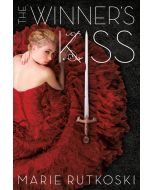CONTENT NOTIFICATIONS
Drugs/Alcohol/Tobacco: Alcohol Abuse,Violence: Mild Violence

 5
5
|
Standard MARC Records Cover Art |
For Grades 9 & Up
This 12-book collection presents a diverse array of stories that connect with older teens, exploring friendships, sibling relationships, personal growth, and identity. Blending humor, realism, and deeper themes, these books offer both engaging entertainment and meaningful reflections on life’s challenges. Some selections may include thought-provoking content addressing identity, relationships, and social issues, including LGBTQIA+ themes, strong language, and sensitive topics such as sexual abuse and suicide.
Fiction, Mature Readers, Novels, Funny/Humorous, Realistic Fiction, Nonfiction

Current Trends High Plus
March 2016
POTENTIALLY SENSITIVE AREAS
Crime: Punishment/Execution,Sexual Content: Mild Sexual Content/Themes,Violence: Mild Violence
 5
5

Current Trends High Plus
March 2015
POTENTIALLY SENSITIVE AREAS
Discrimination: Reference/Discussion,Sexual Content: Mild Sexual Content/Themes,Violence: Mild Violence
 9
9